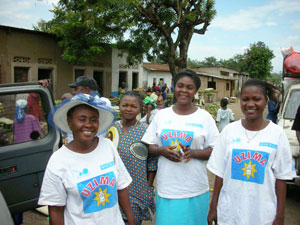Solution of the week 3
Tried and true - treating water with chlorine
Do you like chlorine? I do. Although I might not particularly like the taste of it, it is by far the easiest and cheapest way to disinfect water and make it drinkable, and it probably helped to save more lives than any other single chemical substance on Earth. Using simple techniques, it can be produced and sold locally in developing countries.
In the USA, chlorine began to be widely used as a disinfectant in the early 1900s, and it is credited with playing a key role in increasing American life expectancy from 45 in the early 1900s to about 76 years at present, an increase of 50%. No more cholera, typhoid fever, and dysentery. Today, 98% of all drinking water purification in the USA uses chlorine. Very useful stuff to have around. So what about its use in developing countries?
The problem is that in many developing countries, chlorine is imported, rather than produced locally. This leads to a much higher price, as transportation and storage add to the costs. In remote areas, the delivery chain can easily fall apart, preventing this life-saving substance from reaching the people who need it most.

A $40 chlorine factory
The good news: chlorine is really, really easy to produce. One device (there are more) that accomplishes this is the WATAsol, developed by the Swiss organization Antenna Technologies. A container with two electrodes is filled with brine, an electrical current is run through the brine for a certain amount of time, and voilà. (For the technically inclined, the current turns sodium chloride into sodium hypocloride). One litre of the resulting solution is enough to disinfect 4,000 litres of drinking water. The solution is bottled and sold by local entrepreneurs, usually women.
Chlorine also comes with its own safety system: if your nose tells you there is too much chlorine in the water, there probably is. The smell should be barely noticeable; the laboratory in our nose is very sensitive. The strong smell from water with too much chlorine will probably put you off drinking it long before the concentration actually becomes dangerous.
Although other methods of disinfection such as using ozone and UV-light treatment might win out in the end, chlorine will play a very important role in treating drinking water for a long time to come. In developing countries, it holds great promise for saving lives.
Additional links: =
- Other blogs in this series
- WATAsol homepage of Antenna Technologies
- Akvopedia article on WATAsol
- Articles on Chlorine solutions and [[Chlorine_(NaDCC)| Chlorine tablets]
